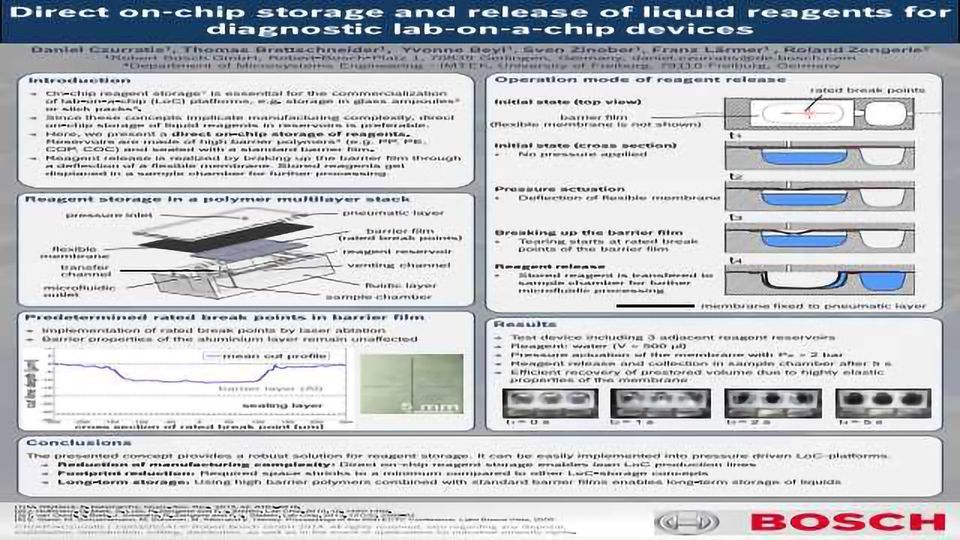Direct On-chip Storage and Release of Liquid Reagents for Diagnostic Lab-on-a-Chip Devices

On-chip storage of liquid reagents is one of the major challenges for the commercialization of polymer-based LoC devices. The key advantages of on-chip reagent storage are: ready for operation, fully automated processing, ease of use, reduction of contamination and transportation risks. In order to guarantee long-term storage of liquids several concepts have been presented [1], for example reagent storage in glass ampoules [2] or stick packs [3]. Since these concepts implicate manufacturing complexity, direct on-chip storage of liquid reagents in reservoirs is preferable. The solution is to provide the required reagents in reservoirs made of high barrier polymers [4] (e.g. PP, PE, COP, COC), which are sealed with a standard barrier film by hot embossing. The barrier film includes an aluminium layer as diffusion barrier, which is structured by laser ablation. This installs rated brake points, without affecting the barrier properties where needed. To release the reagents on demand, a flexible membrane is actuated through pneumatic pressure. The expanding membrane breaks up the rated break points and enables efficient cleaning of the reservoirs for further microfluidic processing. This on-chip reagent storage concept is a big step forward commercialization of LoC-applications.






